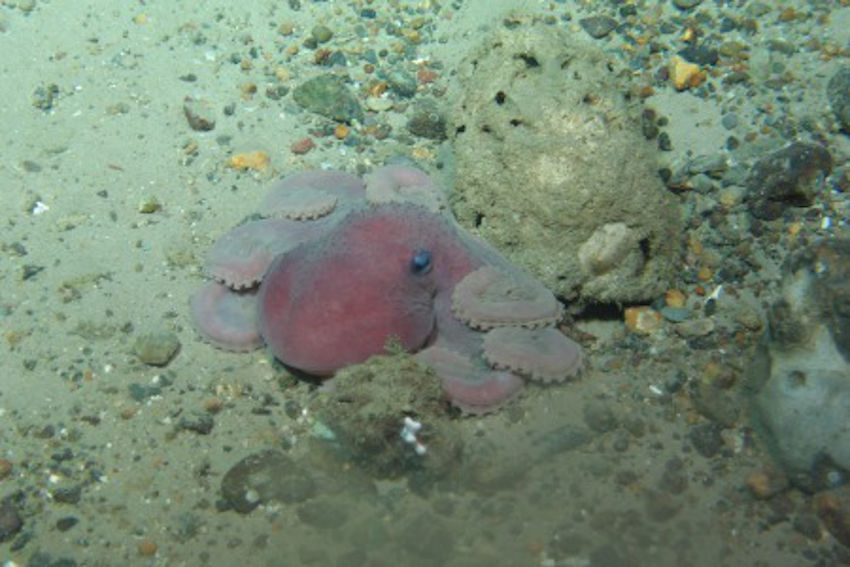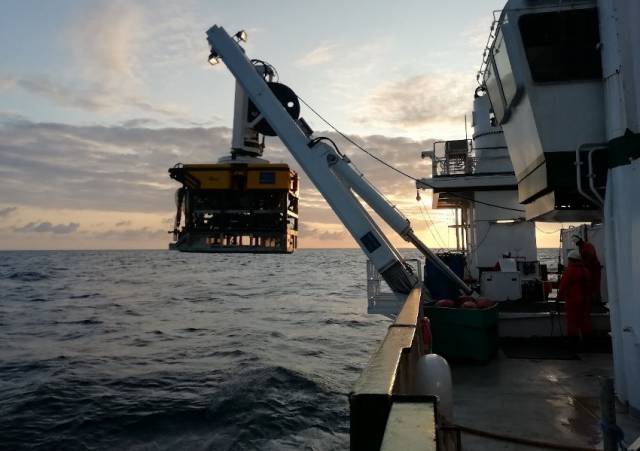An Irish-led, international team of marine scientists on board the RV Celtic Explorer recently completed the third and final leg of an extensive offshore reef study using the Marine Institute’s remote operated vehicle (ROV) Holland 1.
The 21-day expedition investigating sensitive deep-sea habitats at the outer extent of the continental shelf off the southwest of Ireland was part of the SeaRover (Sensitive Ecosystem Assessment and ROV Exploration of Reef) project.
During their time at sea, the survey team mapped 154 separate locations within Ireland's marine territory, in what the Marine Institute describes as one of the most significant deep water benthic habitat assessments undertaken in this country.
The data and findings will contribute to good fisheries practice and the sustainable management of Ireland's marine biodiversity, the institute adds.
The survey used the ROV Holland 1 to capture high-definition footage of reef habitats up to 3000 metres deep, and to recover biological and sediment samples from 52 locations along the continental margin.
“Sensitive reef habitats form fragile ecosystems and attract a variety of marine species, such as sea pens, sponges, fish and crustaceans,” said survey chief scientist Yvonne Leahy, of the National Parks and Wildlife Service (NPWS).
“Surveying these habitats enables us to better understand Ireland’s deep sea territory so that we can protect and monitor our marine biodiversity and sustainably manage Ireland's marine resources effectively.”
Scientists from NUI Galway and University of Plymouth also joined the expedition to gather a range of biological samples to enable further research into population genetics studies, ecological modelling, and the harvesting of sponges for potential novel compounds for use in bio-medical applications.
Sediment samples will also be utilised for microplastics studies by NUI Galway and Galway-Mayo Institute of Technology (GMIT).
 An octopus 1,000 metres below the surface | Photo: Marine Institute
An octopus 1,000 metres below the surface | Photo: Marine Institute
The three SeaRover surveys between since 2017 have involved a combined 63 days at sea, recorded 332 hours of high-definition video from the seafloor — almost 14 days of footage — and have undertaken detailed studies of 350km of seabed along a shelf extent of nearly 2,500km.
The surveys have explored 154 different locations along Ireland’s continental margin, including the Rockall and Porcupine Banks, the Goban Spur and the Whittard Canyon.
The HD camera picks up fine detail of deep-water coral species. The first SeaRover survey in 2017 included the discovery of the deepest known occurrence of the cold-water coral Solenosmilia variabilis, forming reefs in Irish waters at depths of 1,600m.
In 2018 the team discovered a rare shark nursery, 200 miles west of Ireland. A large number of egg cases were filmed on the seafloor at depths reaching 750m, and a large school of blackmouth catshark (Galeus melastomus) were present at the site. There were also numerous recordings of different coral species observed in Irish waters for the first time.
“After three years, the survey team has created an extensive data set which represents one of the most comprehensive assessments of Ireland's marine biodiversity,” said Leonie O'Dowd, Marine Institute section manager and European Maritime and Fisheries Fund (EMFF) programme co-ordinator.
“The success of these surveys is thanks to the coordination and collaboration across many organisations and government departments, and will benefit national policy development as well as researchers and scientists exploring our marine territory in the future.”
Thomas Furey, the Marine Institute’s joint INFOMAR programme manager, added: “It is fantastic to see the underlying INFOMAR seabed mapping data being used to strategically identify and target such vulnerable marine ecosystems for detailed studies in support of future marine management plans.
“In funding INFOMAR, the Department of Communications, Climate Action and Environment are supporting key evidence based investigations of our ever changing marine environment.”
The three-year SeaRover project was commissioned and jointly funded by the Irish Government and the EU’s European Maritime and Fisheries Fund (EMFF).
The cross-government initiative was supported by the Department of Agriculture, Food and Marine, Department of Culture, Heritage and Gaeltacht, and Department of Communications, Climate Action and Environment as part of the Marine Institute’s implementation of the EMFF Marine Biodiversity scheme.
Survey operations were led by the Marine Institute, INFOMAR and NPWS, accompanied by scientists from NUI Galway and the Marine Biology and Ecology Research Centre at the University of Plymouth, and supported by scientists in Geological Survey Ireland and the Norwegian Marine Institute.

































































